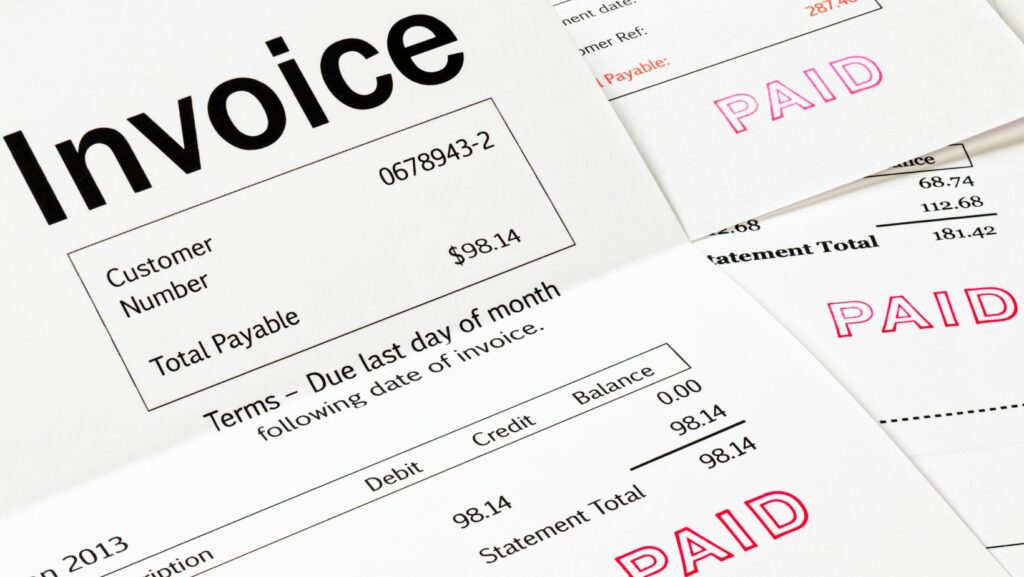No matter the scale of your business or operation, robust invoices are absolutely essential. With the right payments templates, you’ll have everything you need to keep track of sales. In this blog post, we’ll show why invoices matter and how to use them.
The Importance of Sending an Invoice
Whether you’re running a big company or working freelance, an invoice is always helpful. They’ll give your client a full breakdown of what they’re paying for. You can also use them to keep track of what clients owe.
Without an invoice, you won’t have a clear financial paper trail. These documents also make it a lot easier to track your income for tax season. Your transparency in compiling them will also help build trust with clients.
Eight Invoice Practices Worth Following
Sending an invoice is more complex than listing your goods and their cost. Following the correct practices will help maintain a professional image and get faster payments. Here are eight useful practices for sending invoices:
1. Itemize Your Charges
Your client needs to know exactly what they’re paying for. Listing everything as individual “items” helps them see how it all adds up. Without this breakdown, your clients might even suspect that you’re overcharging them.
However, you can still group certain items together under the same project. It all depends on the specific work you’re doing. Ultimately, itemizing can take more time, but it’s definitely worth it for the sake of transparency.
2. Be Descriptive
Similarly, you should elaborate on the services themselves. Always use specific language; being vague here could easily confuse your clients. In addition, being descriptive helps preserve your boundaries by showing where your work starts and ends.
Pairing descriptions and itemizations can only help your client. They’ll know exactly where your value is coming from, boosting customer satisfaction. Thorough descriptions also highlight your attention to detail, giving your business a more professional image.
3. Specify Payment Terms
Your invoice is also a space to outline how the client should pay you. This includes the deadline, which is usually 30 days after sending the invoice. Certain projects will require 50% upfront and 50% upon completion.

You should also give details of your payment methods. Provide several options in case a client prefers one method (such as PayPal) over another. If you plan to implement a late payment fee, elaborate upon this.
4. Use an Online Template
Making an invoice from scratch takes a lot of time. Luckily, there are plenty of templates that you can find online. These set out every field you’ll need to fill in before sending the invoice.
In addition, most of these services are free or low-cost. You might find an invoice that you’ll use for years to come. For an added professional touch, you can even add your company’s logo.
5. Tailor the Document
Invoices can look different depending on the sector you’re in. For example, lawyer invoices may be quite different from medical invoices. The latter might include specific diagnostic codes or an extra space for insurance information.
Once you have an online template, you can edit it to fit your specific needs. You shouldn’t make major changes to the formatting. However, if changing this fits your branding better, it’ll look a lot more cohesive.
6. Double-Check Everything
A single invoice mistake can cause you and your client to doubt past amounts. Always check an invoice at least twice before sending it. If you spot an error after sending it, inform the client right away.

Something as simple as looking over your invoice can help you avoid overcharging. It may even help you realize if you’re missing any items. If there are no problems for the client, you’ll also get your money faster.
7. Send Upon the Work’s Completion
In most cases, you should send your invoice as soon as the work is complete. For example, you might email a client to confirm that you’ve shipped their goods and attach the invoice.
Alternatively, if the project pays per milestone, your invoices should match this. It’s always good to send the invoice as soon as possible. You’ll then be able to receive payment and address any issues more quickly.
8. Keep Digital Records
Keep a record of every invoice you send. You can then refer them back when necessary. It’s always best to send them via email. You’ll both have a copy of the document in your inbox.
It might be best to keep the invoices on a cloud storage platform. These have ample security, so you won’t have to worry about data breaches. In addition, cloud storage platforms always offer high uptime.
Final Thoughts
How you invoice people can massively change your relationship with them. With the right online invoice template at your disposal, you’ll look more professional. This will help you show yourself as a more serious business.



